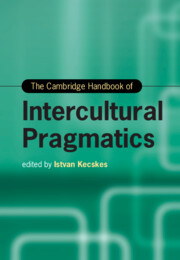Book contents
- The Cambridge Handbook of Intercultural Pragmatics
- Cambridge Handbooks in Language and Linguistics
- The Cambridge Handbook of Intercultural Pragmatics
- Copyright page
- Contents
- Figures
- Tables
- Acknowledgment
- Contributors
- Introduction The Rise of Intercultural Pragmatics
- Part I Theoretical Foundation
- Part II Key Issues in Intercultural Pragmatics Research
- Part III Interface of Intercultural Pragmatics and Related Disciplines
- Part IV Intercultural Pragmatics in Different Types of Communication
- Part V Language Learning
- 28 Pragmatic Competence
- 29 Pragmatic Awareness in Intercultural Language Learning
- 30 Interculturality and the Study Abroad Experience: Pragmatic and Sociolinguistic Development
- 31 Intercultural Mediation in Language Learning
- 32 Interaction in the Multilingual Classroom
- Index
- References
29 - Pragmatic Awareness in Intercultural Language Learning
from Part V - Language Learning
Published online by Cambridge University Press: 29 September 2022
- The Cambridge Handbook of Intercultural Pragmatics
- Cambridge Handbooks in Language and Linguistics
- The Cambridge Handbook of Intercultural Pragmatics
- Copyright page
- Contents
- Figures
- Tables
- Acknowledgment
- Contributors
- Introduction The Rise of Intercultural Pragmatics
- Part I Theoretical Foundation
- Part II Key Issues in Intercultural Pragmatics Research
- Part III Interface of Intercultural Pragmatics and Related Disciplines
- Part IV Intercultural Pragmatics in Different Types of Communication
- Part V Language Learning
- 28 Pragmatic Competence
- 29 Pragmatic Awareness in Intercultural Language Learning
- 30 Interculturality and the Study Abroad Experience: Pragmatic and Sociolinguistic Development
- 31 Intercultural Mediation in Language Learning
- 32 Interaction in the Multilingual Classroom
- Index
- References
Summary
This chapter examines theoretical understandings and research findings related to the notion of pragmatic awareness within the field of intercultural language learning, highlighting important points of connection with the field of intercultural pragmatics. It first presents a critical overview of dominant theoretical understandings of pragmatic awareness within the field of language learning and then delineates key assumptions about the relationship between pragmatics and culture that have informed work on pragmatic awareness with a distinctly intercultural orientation. This discussion brings into focus a number of ways that sociocultural and socio-cognitive perspectives within intercultural pragmatics have contributed to an enlarged understanding of the nature of pragmatic interpretation and the close links between pragmatics and moral judgments. The chapter then addresses key findings and perspectives from empirical studies on pragmatic awareness within the field of intercultural language learning, highlighting implications for the field of intercultural pragmatics and areas for future development.
- Type
- Chapter
- Information
- The Cambridge Handbook of Intercultural Pragmatics , pp. 766 - 787Publisher: Cambridge University PressPrint publication year: 2022
References
- 2
- Cited by

